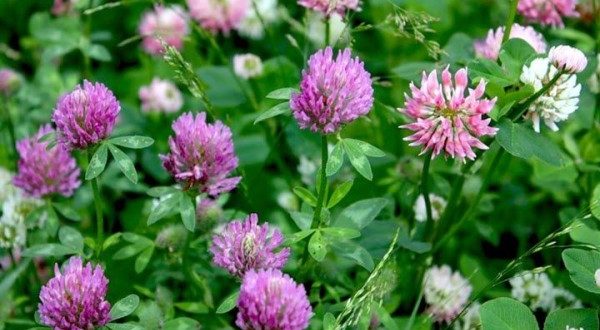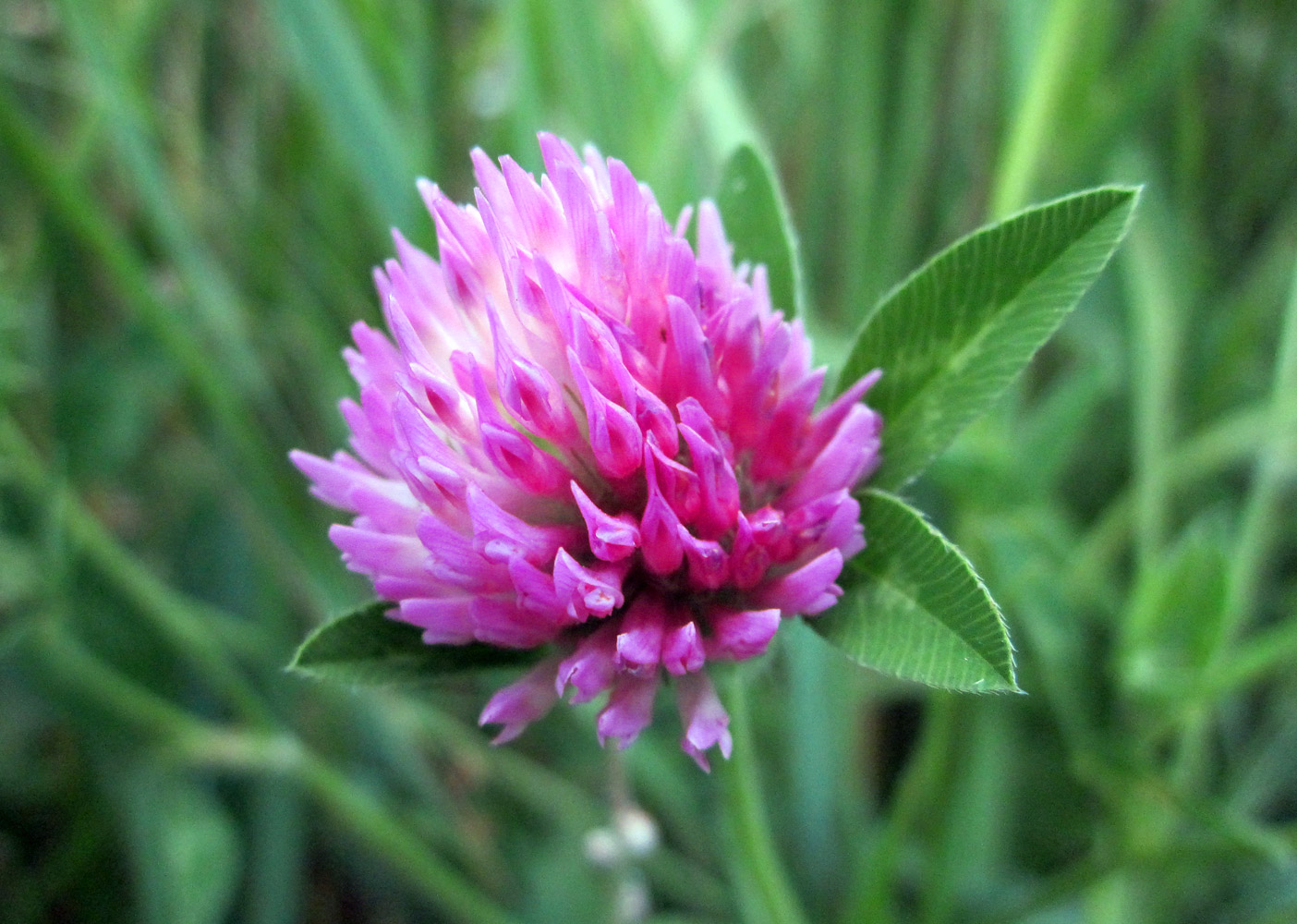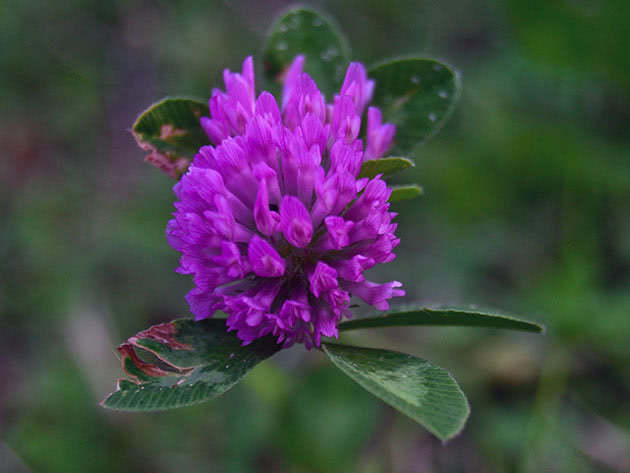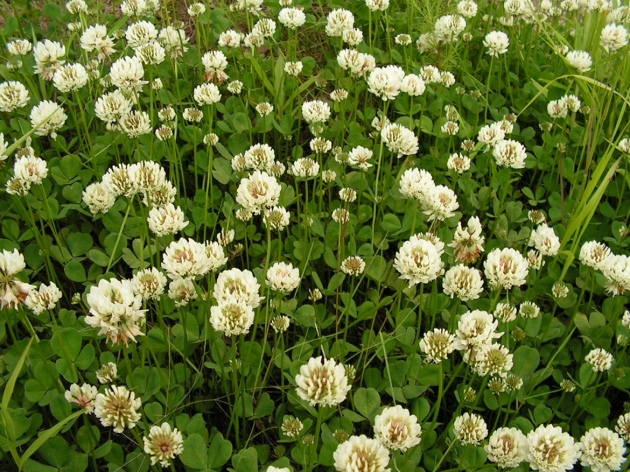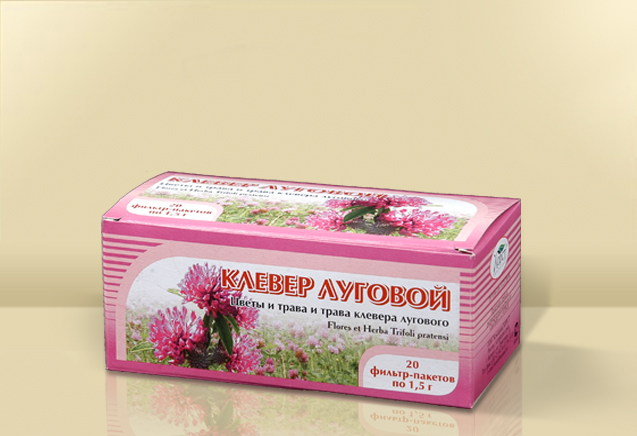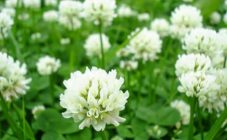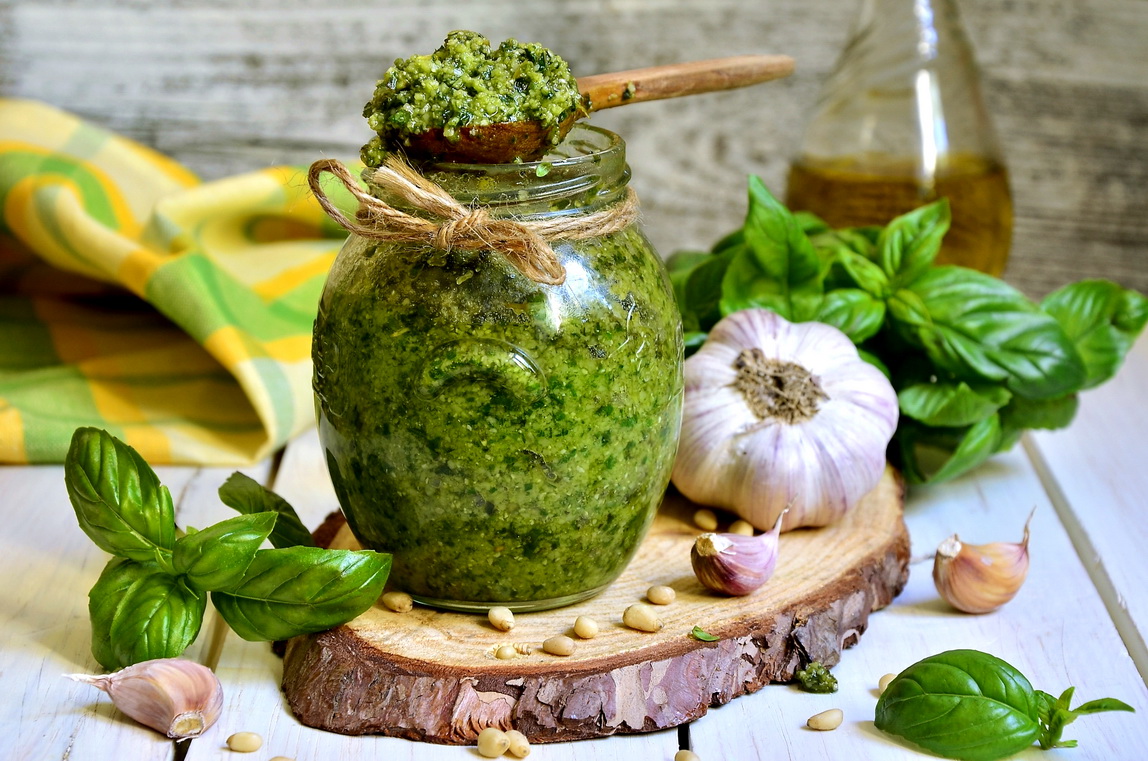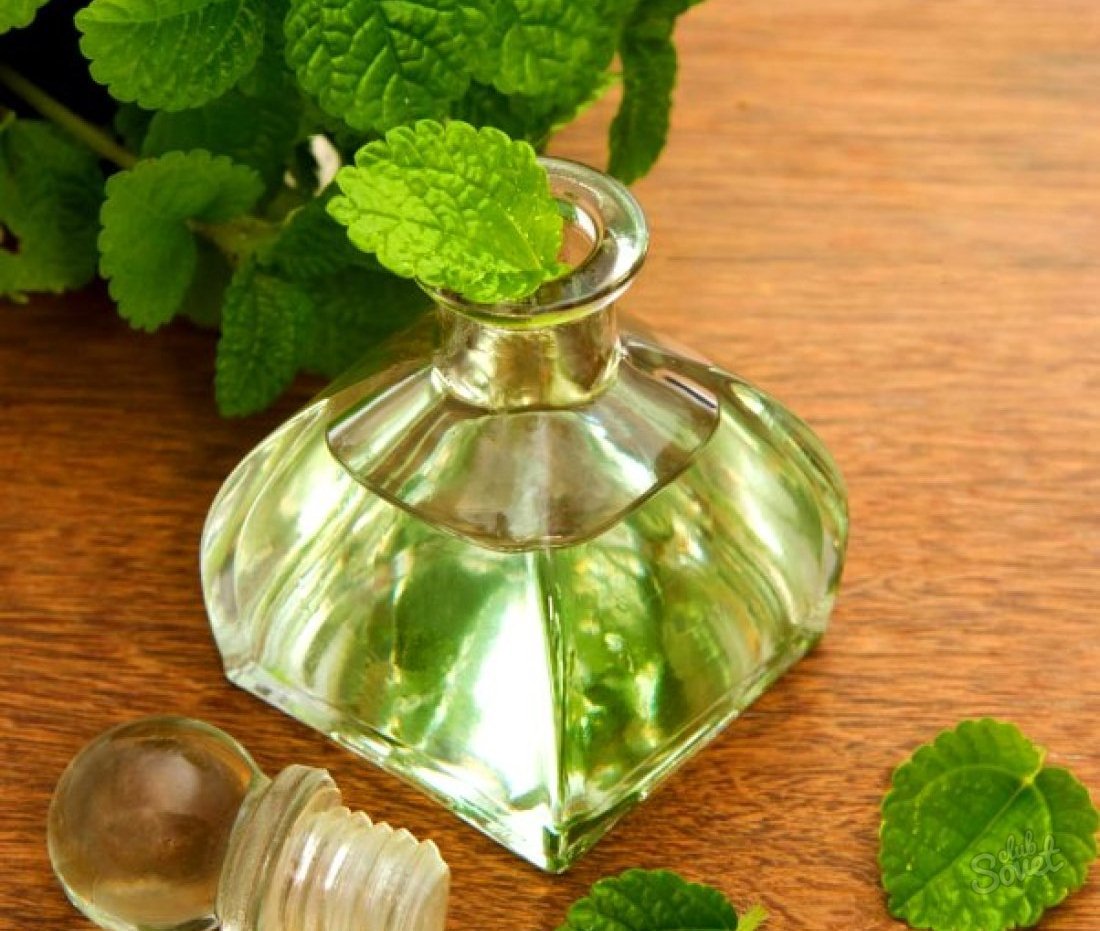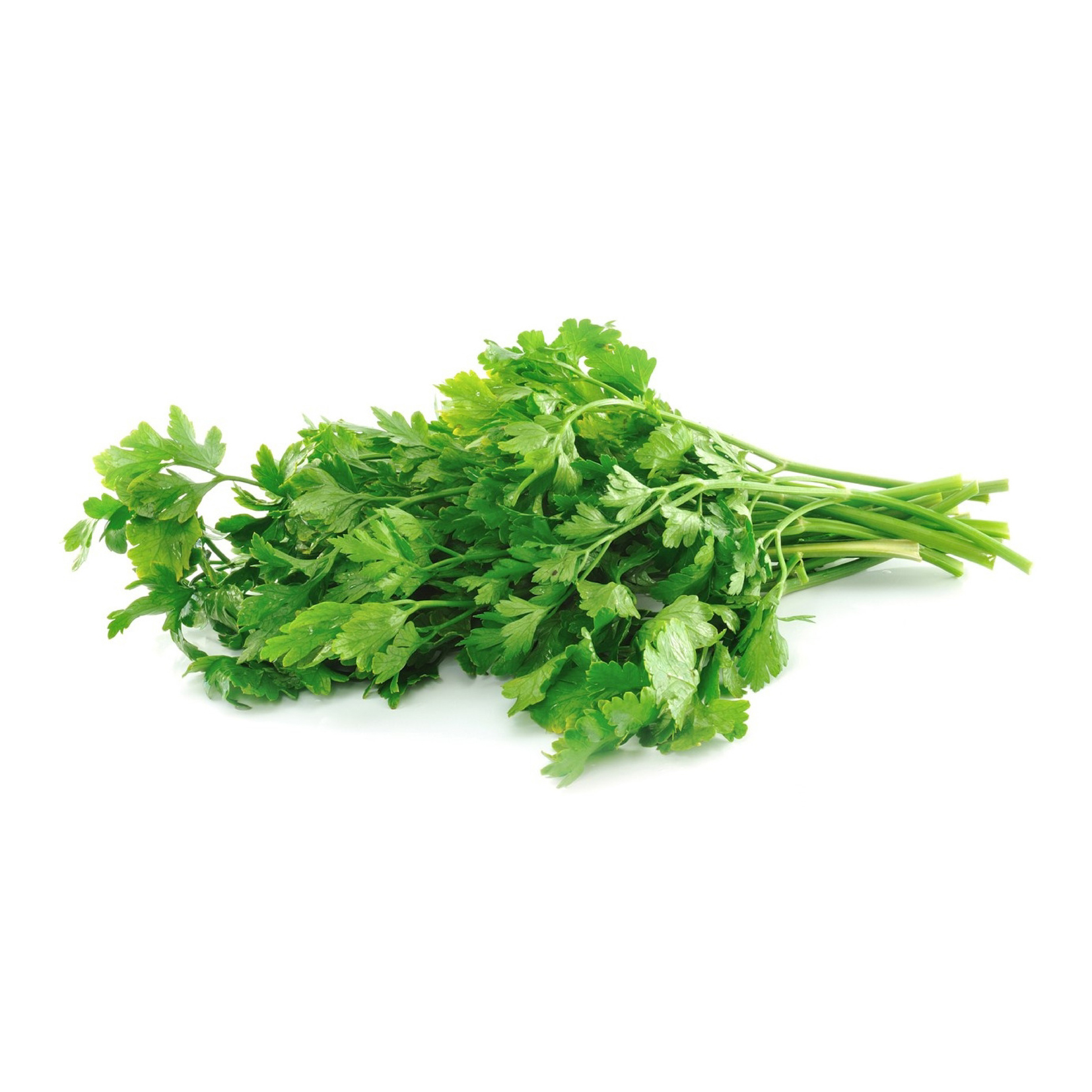Content:
Clover is a well-known plant worldwide for its nutritional and medicinal properties. The culture grows widely in natural conditions, it can be grown in a cultural environment in a garden near a house or summer cottage. For normal cultivation, you need to know what clover is, how clover is useful for humans, when clover blooms, etc.
Clover: plant description
Clover (Latin name - Trifolium) is a genus of plants belonging to the Moth subfamily. Clover is an annual or perennial plant, its root system is fibrous, in some species it becomes woody. The foliage is predominantly trifoliate, in some cases there are plants with four leaves or clawed ones. Stipules are characterized by filmy, most of them are densely fused together.
The flowers are predominantly red or white, in rare cases it is multi-colored. They are small in size, usually in the form of spherical heads, which make up their main external difference from other crops from the legume family. Flowers in some cases are covered with two or one superficial leaflet. When asked which inflorescence the clover has, we can say that the flowers are most often arranged in racemose or umbellate inflorescences, in rare cases they are located singly.
The fruit is a pod, inside which there are 1-2 seeds, in rare cases - more. Bob is revealed relatively late, and sometimes not at all. The seeds are small, they are either oblong or in the form of a ball.
The most common species of this genus is meadow clover, also known as red clover. The culture is widespread throughout Europe, excluding the arctic regions. Plantations are also located in Morocco, Algeria, Tunisia and other states of North Africa, as well as in Central and West Asia and North America. On the territory of Russia, culture grows everywhere in the European territory of Russia, as well as in Siberia, Kamchatka and other regions of the Far East. Meadow clover usually grows naturally in open areas, such as moderately humid meadows, roadsides, wastelands, deserts and forest glades, fields as weeds.
Other known types of clover are:
- purple clover;
- lupine clover;
- strawberry clover;
- field;
- pink;
- creeping;
- mountain;
- narrow-leaved, etc.
What family of plants does clover belong to?
When asked which family the clover belongs to, we can say that the plant should be attributed to the legume family. Proof of this is the nitrogen-fixing capacity of clover, which is typical of legumes.
Types and varieties
Under cultural conditions, two main varieties of meadow clover are widely cultivated: two-cut early maturing and single-cut late maturing. The first category includes plants characterized by accelerated development and increased growth of the vegetative mass.Such plants branch more strongly and have a thicker foliage. A feature of this variety is the ability to form aftermath.
Late-ripening plants differ from early-ripening ones at the morphological level - they have more elongated stipules and an increased number of stipules, the number of which varies from 7 to 12. Such plants give a higher yield on the first cut, but they are subsequently practically unable to form aftermath. The considered variety stands out for its higher winter hardiness.
The most common varieties of meadow clover are:
- Amber. An early ripening variety that is resistant to root rot and cancer. During the growing season, it contributes to obtaining 2-3 mows;
- Resistant. A variety of Belarusian selection, ripening at an early date and distinguished by its increased winter hardiness. During the growing season, it gives 2 mows and stands out resistance to high humidity;
- Maro. A medium-early ripening variety obtained in Germany. Shows resistance to diseases of the root system and cancer;
- Pratsavnik. Belarusian variety, characterized by an increased level of productivity and drought tolerance. Resistant to lodging, during the growing season gives an average of two cuts;
- Long-term. The variety is obtained as a result of purposeful crossing of the early-maturing Slutskiy and Predkarpatskiy 33 varieties. It has a high yield and winter hardiness, ripens early. Gives three cuttings for the entire growing season;
- Ternopil-2. The variety was bred in Ukraine, is resistant to unfavorable factors of the winter period, ripens early and has increased productivity. For the season gives 2-3 mows;
- Renova. A high-yielding variety characterized by drought tolerance. For the season gives 2 mows.
Other common varieties of red clover in our country are:
- Yaskrava;
- Mereya;
- Slutsky;
- Demena;
- Early-2;
- Veteran;
- Amos;
- Knight;
- Valley;
- Vitebsk resident;
- Minsk;
- Tsudovny;
- Trio;
- Altyn;
- Green;
- Hephaestus and others.
How clover reproduces
The culture reproduces mainly by seed. On some varieties, vegetative division can be applied, but such plants take root worse. Seeds are sown to a depth of 2 cm either before winter or in spring after winter stratification.
Where does clover grow
Clover is a plant that grows well on various types of soil, but the most optimal options for it are loam, sandy loam, black soil and gray forest soils. In the presence of irrigation, the culture grows on all soils, and with reclamation - even on peatlands. Clay soils are the least suitable for this. The soil must be sufficiently moistened, but too much liquid is also harmful.
Clover: plant properties
The medicinal properties of clover are well known throughout the world. Its foliage and inflorescences contain a significant content of medicinal and health-promoting substances, which include:
- carotene;
- tannins;
- fatty and essential oils;
- salicylic acid;
- flavonoids;
- phytoestrogens;
- fiber, etc.
Clover has found application in the preparation of various medicines, mixtures, syrups. It is a component of many herbal medicinal preparations. On its basis, infusions, decoctions, tinctures are prepared at home, and freshly squeezed juice is also used. These substances are used for lotions, rubbing, rinsing, medicinal baths. The vegetative parts of clover are added to the following products:
- ointments;
- lotions;
- means for the treatment of skin diseases and washing;
- powder;
- shampoos.
The culture in question has the following health benefits:
- diaphoretic;
- antiseptic;
- expectorant;
- astringent;
- diuretic;
- choleretic;
- anti-inflammatory;
- hemostatic.
With the help of infusions and decoctions based on clover plants, it is possible to free the organisms from the accumulated excess liquid. Also, these drinks are used for rinsing in the fight against tonsillitis, gingivitis and stomatitis.
The internal use of broths from porridge is widely practiced in folk medicine in the fight against diseases and problems with the body, such as:
- diseases of the biliary tract and kidneys;
- urolithiasis disease;
- asthenia;
- pulmonary tuberculosis;
- poisoning;
- hemorrhoids;
- inflammation of the bladder and appendages;
- dizziness, headaches;
- anemia;
- rickets;
- bleeding of various nature.
Due to the anti-sclerotic effect of clover, it can be used in the fight against atherosclerosis and the cardiovascular system. The plant contains flavonoids, which have the following beneficial effects on the body:
- bringing metabolic processes back to normal;
- prevention of premature aging;
- oxygenation of tissues;
- normalization of fat metabolism.
Clover-based products have a positive effect on the human body, which is as follows:
- the condition of the veins and other vessels improves;
- intracranial and blood pressure decreases, as well as cholesterol levels;
- vascular walls are strengthened;
- the hemoglobin content increases.
Meadow clover is especially effective against cancerous tumors. The drugs cleanse the blood and mucus by inhibiting the formation of new cancer cells.
Contraindications
Clover and medicinal products based on it are not recommended for use in the following cases:
- thrombophlebitis;
- diarrhea;
- pregnancy;
- dilated veins;
- estrogen-dependent cancer;
- allergies and individual intolerance;
- recent heart attack or stroke.
With prolonged use of this remedy in men there is a risk of decreased potency, and in women - delays in the menstrual cycle.
Diseases and pests
The greatest danger to clover is represented by diseases such as:
- fusarium;
- rust;
- anthracnose;
- ascochitis;
- brown spot of clover;
- typhulosis;
- cancer;
- bacteriosis of roots;
- color mold;
- vein mosaic.
For the treatment of these diseases, most often resort to the use of appropriate fungicides, used in accordance with the instructions. As a preventive measure, it is recommended to strictly observe the cultivation technology, in particular, to take into account the seeding rate, predecessors, irrigation and feeding regimes, etc. Viral diseases usually cannot be treated with chemicals, therefore, if they are available, it is recommended to remove diseased specimens from the plot and burn them.
Pests on porridge are usually fought with insecticides. The most dangerous harmful insects on this crop are:
- meadow moth;
- phytonomus;
- yellow-footed and small seed-eaters;
- weevil, etc.
Useful information
Red clover is a widespread forage plant throughout the world, including in Russia. Meadow clover is usually cultivated under cultivation for this very purpose, because the bacteria in its root system are symbiotically associated with nitrogen, as a result of which the vegetative mass becomes saturated with proteins.
Some parts of the plant can be eaten. So, flowers and leaves are dried to add to tea. Fresh flowers can be used in salads, for example. Fresh leaves are also acceptable for food, despite the fact that they have an unpleasant taste.
The positive properties of clover are responsible for its popularity as a cultivated plant. If you have certain knowledge and skills, this process will not present anything complicated and will allow you to get high-quality crop plantings.
